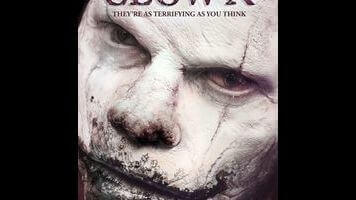From YouTube upload to mega-budget superhero movie: That’s the unlikely career arc of writer-director Jon Watts. Before he made his Sundance breakthrough with last year’s Cop Car, and much before he scored the plum gig of helming the next Spider-Man, Watts collaborated with some NYU film-school buddies on a fake trailer for a fake movie about a man who begins transforming into a carnivorous clown. The cheeky final touch: falsely attributing the project to “master of horror Eli Roth.” Long story short, the clip got tons of views and caught Roth’s attention; impressed by their ingenuity and gall, the Hostel director helped Watts and company make the film for real. After two years in distribution limbo, Clown is finally arriving in U.S. theaters and on iTunes. But while Watts deserves some credit for treating a totally ridiculous premise with a straight face, his grisly first feature plays very much like what it is: a 90-second joke stretched uncomfortably to full length.
The movie opens promisingly, with an unnerving montage of clown-themed treats and toys, accompanied by children’s screams. Excited, not terrified, the kids are around to celebrate the birthday of young Jack (Christian Distefano), whose mother Meg (Laura Allen) has hired a clown to perform. When the entertainer cancels last minute, Jack’s realtor father Kent (Andy Powers) comes to the rescue, slipping on a clown costume he discovers in the storage space of one of his properties. But this is no ordinary outfit, and Kent soon finds it impossible to remove—the red nose sticking to his own, the curly wig becoming his real hair, the baggy clothes fusing with his skin. The house’s old owner (Peter Stormare, overacting as only Peter Stormare can) reveals the terrifying truth: Kent has bonded with the remains of an ancient Nordic demon, and he will, according to (fabricated) folklore, quickly begin craving the flesh of children.
There’s something to be said for attempting to breathe new life into a trope as tired as the murderous clown. Watts gets yuks out of the early stages of Kent’s transformation, when he has to go to work looking like a vagrant Ronald McDonald, and yucks out of the later stages, when he begins spitting out teeth and bleeding rainbow colors. But the body-horror dimension is mainly a prelude to undistinguished creature-feature scares: Though some of the gore is gnarly and the monster effects are solid, Clown doesn’t much play with the brightly deranged, kid-courting theatricality of actual clowns, which is part of what makes, say, Pennywise such a frightening creation. Kent’s costume-party “theme” could easily be swapped without much change to the overall effect—which is to say, the fact that it’s a clown wreaking havoc in Clown is almost incidental.
Those looking for a subtext to this mayhem, meanwhile, could read the film as a veiled drama about a pedophile succumbing to his urges, his wife unwilling to accept the truth about her husband. (This would help account for Meg’s sometimes boneheaded behavior.) But Clown attempts little emotional investment in that idea, which would gel uneasily with the film’s sadistic streak anyway. As he proved in Cop Car, Watts shares with Guillermo Del Toro a thing for putting very young characters in mortal peril. Hardened genre fans may appreciate the (literal and figurative) gutsiness of violating taboos about violence against children; others will just squirm during, for example, a scene where a little girl’s increasingly alarmed screams for help fall on deaf ears. Regardless, both the receptive and the repelled should have no trouble seeing that Clown works better as a log line than a feature, a fake movie than a real one. At a minute and a half, it got everyone’s attention. At an hour and a half, it loses it.
[Editor’s note: Jon Watts has directed episodes of The Onion News Network and Onion SportsDome. He has never met A.A. Dowd.]


 Keep scrolling for more great stories from A.V. Club.
Keep scrolling for more great stories from A.V. Club.